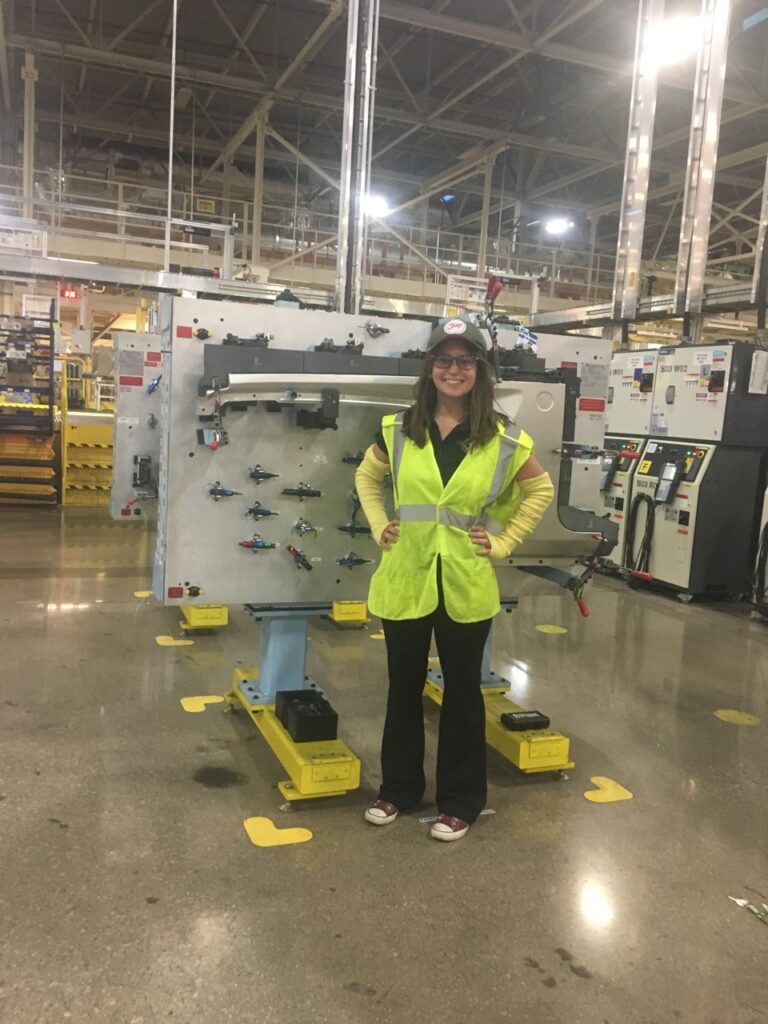

“FIAT CHRYSLER (FCA) JEEP QUALITY ENGINEERING GROUP SAVES TIME IN COMPANY WIDE AUDIT WITH AUTOMATED SUPPLIER CONVERTER”
From Resume:
- Metrology Quality Intern, Toledo Jeep Assembly Complex, Toledo, OH
- May-August 2018
- Programmed Excel VBA code to translate 127 large scale OEM matrices, conserving 80+ hours of product launch time
More Information:
Background
My part in the team was to convert over 127 Original Equipment Manufacturer (OEM) X-Matrix excel sheets, to Jeep standard Quality Matrices (QM). Each excel sheet takes 10-30 minutes to convert by hand, depending on complexity.
The project of focus when I started my internship at Jeep Toledo Assembly Plant was a company-wide audit of the manufacturing process. Since Fiat Chrysler (FCA) is a World Class Manufacturing Silver Status rated company, the production records required for maintaining that status are thorough. My part in the team was to convert over 127 Original Equipment Manufacturer (OEM) X-Matrix excel sheets, to Jeep standard Quality Matrices (QM). Each excel sheet takes 10-30 minutes to convert by hand, depending on complexity. The data on these sheets specify the manufacturing checks needed to achieve 0 defects from the beginning to the end of the production line. These quality matrices then get translated into AM/PM sheets for operators on the shop floor to monitor and record metrics during production of the parts and assemblies manufactured at the plant. This quality assurance ideally produces 100% yield of all units produced, and therefore saves the company from wasting money and time.
Issue
Two of the biggest challenges of converting between X and QM matrices were the constant change in the QM matrix template, the vast differences in records from the OEM X matrices, and the sheer quantity of OEM templates received.
Two of the biggest challenges of converting between X and QM matrices were the constant change in the QM matrix template, the vast differences in records from the OEM X matrices, and the sheer quantity of OEM templates received. On top of a QM matrix template that changed until the final submission, the first thing we noticed were the vast differences in how OEM suppliers had been filling out the template that Jeep had provided to them. Some forms were received with hidden rows, different nomenclature, and different markings like x’s or shaded boxes to indicate a selected feature. Lastly, over 120 matrices were received by the plant. All together, this made keeping consistent records difficult to maintain and progress. The solution was an automated X to QM matrix converter.
Solution
The solution was a Visual Basic-based (VBA) automated X to QM matrix converter that is capable of running 120 matrix conversions at a time and that accounts for >90% of discrepancies in OEM received X matrices and whose template is capable of constant change.
The solution was a Visual Basic-based (VBA) automated X to QM matrix converter that is capable of running 120 matrix conversions at a time and that accounts for >90% of discrepancies in OEM received X matrices and whose template is capable of constant change. Creating this automated converter required me to identify the most common discrepancies in X matrices, such as hidden rows and columns, and differences in nomenclature, and then account for them in the code. It also required creating the ability to upload more than one excel document at a time and the ability to get the file name and save it under a new name in the new format.
Result
The overall run time for the automated conversion of one sheet was a few seconds, whereas doing it by hand takes an average of 10-30 minutes per sheet, depending on complexity. The run time for all 120 matrix conversions was able to be performed in a few minutes with little to no errors given, compared to the 80+ hours it would’ve taken to complete the task.
The result was a user interface capable of accepting minor changes in format that detected >90% of X matrix discrepancies and could accept multiple forms at one time. The overall run time for the automated conversion of one sheet was a few seconds, whereas doing it by hand takes an average of 10-30 minutes per sheet, depending on complexity. The run time for all 120 matrix conversions was able to be performed in a few minutes with little to no errors given, compared to the 80+ hours it would’ve taken to complete the task. The audit report was submitted on time with correct formatting and little variation in standardization. Expanding on the scope of this project, not only are there discrepancies in formatting between the Jeep plant and OEM suppliers, but there are discrepancies between plants company-wide. In order to get Jeep to the next level of standardization, automating big-data tasks like the one I did is a good investment in time and resources and can potentially save the engineering groups’ time from performing daunting tasks and keep their focus on the shop floor instead.